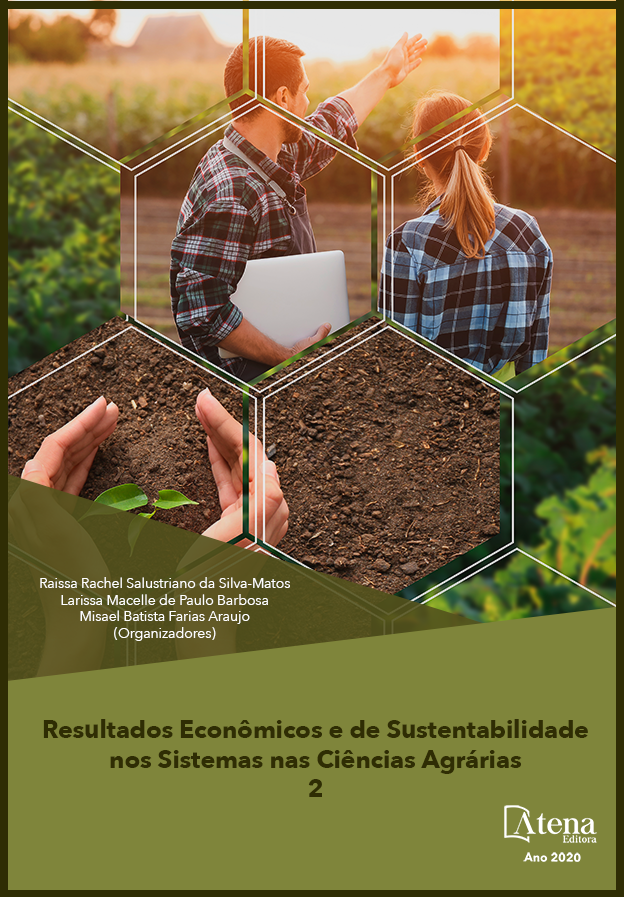
PREDIÇÃO DE GANHO GENÉTICO EM GENÓTIPOS DE SOJA POR MEIO DE ÍNDICES DE SELEÇÃO
A cultura da soja [Glycine max (L.) Merrill] se destaca por ser a principal oleaginosa cultivada a nível mundial. No cenário agrícola mundial, pela primeira vez na história, o Brasil superou os Estados Unidos e aparece como o maior produtor mundial deste grão, com uma produção recorde de 120,4 milhões de toneladas, correspondendo a um aumento de 4,7% em relação à safra 2018/19, com uma área cultivada de 36,8 milhões de hectares no ano agrícola 2019/2020 (CONAB, 2020). Sua grande expansão é decorrente de utilização de cultivares melhoradas, técnicas de manejo e novas tecnologias utilizadas, a fim de obter o máximo potencial produtivo das cultivares de soja. Os caracteres quantitativos são geralmente de maior relevância, os quais apresentam grande influência ambiental e muitas vezes uma inter-relação importante entre os mesmos. Assim, deve-se objetivar seleção de vários atributos agronômicos, visando ganhos máximos dos genótipos selecionados (COSTA et al., 2019). Neste contexto, uma estratégia utilizada pelos melhoristas é o emprego dos índices de seleção, os quais possibilitam agregar múltiplas informações visando a seleção de um conjunto de variáveis que reúna vários atributos de interesse econômico simultaneamente (CRUZ; REGAZZI e CARNEIRO, 2012). O objetivo do presente trabalho consiste em estimar o ganho com a seleção por meio de diferentes índices de seleção, para identificar cultivares comerciais de soja adaptadas ao cultivo na região de Jaboticabal, visando recomendação dos genótipos superiores.
PREDIÇÃO DE GANHO GENÉTICO EM GENÓTIPOS DE SOJA POR MEIO DE ÍNDICES DE SELEÇÃO
-
DOI: 10.22533/at.ed.75120111214
-
Palavras-chave: Glycine max, critérios de seleção, melhoramento genético
-
Keywords: Glycine max, selection criteria, genetic improvement
-
Abstract:
The soybean crop [Glycine max (L.) Merrill] stands out for being the main oilseed cultivated worldwide. In the world agricultural scenario, for the first time in history, Brazil surpassed the United States and appears as the world's largest producer of this grain, with a record production of 120.4 million tons, corresponding to an increase of 4.7% in relation to the 2018/19 harvest, with a cultivated area of 36.8 million hectares in the 2019/2020 agricultural year (CONAB, 2020). Its great expansion is due to the use of improved cultivars, management techniques and new technologies used, in order to obtain the maximum productive potential of soybean cultivars. Quantitative characters are generally more relevant, which have great environmental influence and often have an important interrelationship between them. The selection of several agronomic attributes should be aimed at, aiming at maximum gains of the selected genotypes (COSTA et al., 2019). In this context, a strategy used by breeders is the use of selection indexes, which make it possible to aggregate multiple information in order to select a set of variables that brings together several attributes of economic interest simultaneously (CRUZ; REGAZZI and CARNEIRO, 2012). The objective of the present work is to estimate the gain with the selection through different selection indexes, to identify commercial soybean cultivars adapted to the cultivation in the Jaboticabal region, aiming at the recommendation of the superior genotypes.
-
Número de páginas: 8
- Dardânia Soares Cristeli
- Alyce Carla Rodrigues Moitinho
- Thayná Pereira Garcia
- Alice Pereira Silva
- Lígia de Oliveira Amaral
- Ivana Marino Bárbaro-Torneli
- Sandra Helena Unêda-Trevisoli
- Ana Paula Lira Costa


